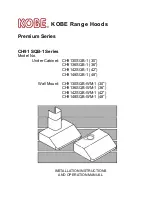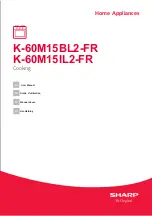
18
To Convert Surface Burners
1. If they are installed, remove the burner grates.
2. Remove the burner caps.
3. Using a Phillips screwdriver, remove the burner base..
4. Apply masking tape to the end of a
⁹⁄₃₂
" (7 mm) nut driver to
help hold the LP gas orifice spud in the nut driver while
changing it. Press nut driver down onto the LP gas orifice
spud and remove by turning it counterclockwise and lifting
out. Set the LP gas orifice spud aside.
Use the following chart for correct Natural gas orifice spud for
each burner. Refer to the model/serial rating plate on the lower
right side of the front frame for proper sizing of Natural orifice
spuds for each burner location.
Natural Gas Orifice Spud Chart
5. Replace the LP gas orifice spud with correct Natural gas
orifice spud. See the “Natural Gas Orifice Spud Chart.”
6. Replace burner base and hand tighten the screws.
7. Replace burner cap.
8. Repeat steps 1 through 7 for the remaining burners.
9. Place LP gas orifice spuds in plastic parts bag for future use
and keep with package containing literature.
10. Replace burner grates.
11. Reinstall storage drawer. See the “Replace Oven Racks and
Storage Drawer” section for instructions.
12. Reinstall oven door. See the “Oven Door” section of the Use
and Care Guide.
13. Complete installation. See “Make Gas Connection” and
“Electronic Ignition System” sections.
Checking for proper cooktop burner flame is very important.
The small inner cone should have a very distinct blue flame ¼"
to ½" long. The outer cone is not as distinct as the inner cone.
Natural gas flames do not have yellow tips.
IMPORTANT: You may have to adjust the “LO” setting for
each cooktop burner.
A. Burner cap
B. Gas tube opening
C. Burner base screws
D. Burner base
A. LP gas orifice spud
A
B
C
D
A
Burner Rating
Color
Number
5,000 BTU
Green
107N
9,200 BTU
Clear
142N
12,000 BTU
Clear
161N
14,000 BTU
Clear
180N
16,000 BTU
Black
195N
















































